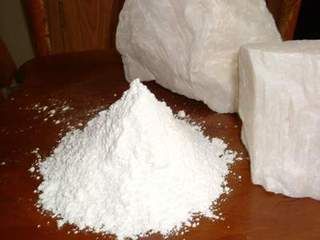Description
-
Model:***0Mã€****0Mã€****0Mã€****0Mã€****0Mã€*****0Mã€**0Mã€**0Mã€**5Mã€**0Mã€**0Mã€**0Mã€***0M。
-
Application in Paint and Coating
Industries
(1) Barrier
Effect: In paint film,flaky filler will form a
basically parallel arrangement, thus strongly preventing the
penetration of water and other corrosive substances, and if using
high-quality mica powder( diameter-thickness ratio being at least
*0 times, preferably *0 times), this kind of penetration time will
normally be extended by 3 times. As the mica filler is much cheaper
than the special resin, it has a very high technological and
economic value.
-
(2)
Improving Physical and Mechanical Properties of the
Film: Using wet ground mica powder can improve a series
of physical and mechanical properties of paint film. The key is the
morphological characteristics of fillers, namely, the
diameter-thickness ratio of flaky filler and length-diameter ratio
of fibrous filler. Granular filler acts like sands and stones in
the cement concrete to enhance the steel.
(3)
Improve the Anti-Wear Property of the Film: The
hardness of resin itself is limited, and the intensity of many
types of filler is not high (e.g., talcum powder). On the contrary,
mica, one of the components of granite, is great in terms of its
hardness and mechanical strength. Therefore, adding mica as filler,
the anti-wear performance of coatings can be significantly
improved. That’s why mica powder is preferably used into car paint,
road paint, mechanical anti-corrosion coatings and wall
coatings.
(4)
Insulation: Mica, with a very high rate of electric
resistance (******5 ohm· cm), is in itself the best insulation
material and it is a publicly known technology to use it to improve
the insulation property of paint film. What’s interesting is that
when working with the composite material of organic silicon resin
and organic silicon and boric resin, they will convert to a kind of
ceramic substance with good mechanical strength and insulating
property once encountering high temperature. Therefore, wire and
cable made of this kind of insulating material can still maintain
its original insulation property even after fire, which is quite
important for the mines, tunnels, special buildings and facilities,
etc.
(5)
Anti-Flaming: Mica powder is a kind of very valuable
fire-retardant filler and it can be used to make flame-retardant
and fire resistant paint if applied with an organic halogen flame
retardant.
(6)
Anti-UV and Infrared Rays: Mica is very excellent in
shielding ultraviolet and infrared rays, etc. So adding wet ground
mica powder into the outdoor paint can significantly enhance the
film's anti-ultraviolet performance and slow down its aging. By its
performance of shielding infrared rays, mica is used in making heat
preservation and thermal insulation materials (such as
paint).
(7)
Reducing Sedimentation: Suspension performance of wet
ground mica is very excellent. The extremely thin and tiny chips
can suspend permanently in a medium without hierarchical
sedimentation.
(8)
Heat Radiation and High-Temperature Coatings: Mica has
a great capability of radiating infrared rays. For instance, when
working with iron oxide, etc., it can create excellent thermal
radiation effects. The most typical example is its application in
spacecraft coatings (reducing the temperature of the sunny side by
tens of degrees). Many painting outfitting of heating elements and
high-temperature facilities all need to use the special paint
containing mica powder, because such coatings can still be workable
under very high temperatures, such as ***0 ℃ or so. At that time
the steel will become red-hot, but the paint remains
unharmed.
(9)
Gloss Effect: Mica has good pearlescent gloss, hence,
when using large-size and thin-sheet mica products, materials, such
as paints and coatings, can be shiny, glossy or reflective. On the
contrary, super-fine mica powder can make repeated and mutual
reflection within the materials, thus creating delustering
effect.
(*0)
Sound and Vibration Damping Effects: Mica can
significantly change a series of physical modulus of the material
as well as form or alter its viscoelasticity. Such materials can
effectively absorb vibration energy as well as weaken shock and
sound waves. In addition, shock waves and sound waves will form
repeated reflections between mica chips, which also results in
weakening the energy. Therefore, wet ground mica is also used to
prepare sound and vibration damping materials.
